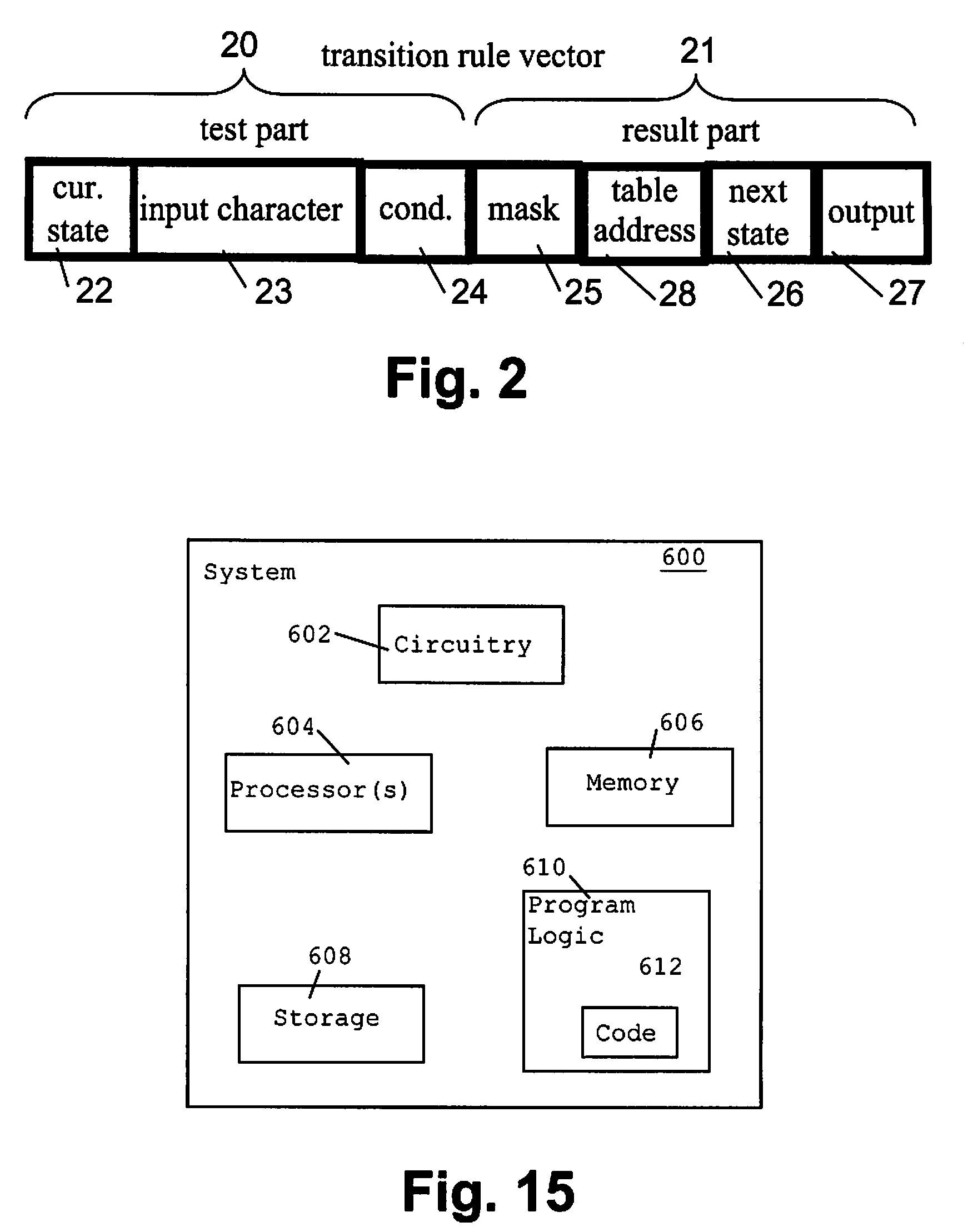Method and System for Changing a Description for a State Transition Function of a State Machine Engine
a state machine engine and state transition function technology, applied in the field of state machine engine design and implementation, can solve the problems of complex mathematical operations, input values, or combinations of input values, and are difficult to implement in an efficient way, so as to improve the overall performance, optimize the speed of processing, and improve the cache hit rate
- Summary
- Abstract
- Description
- Claims
- Application Information
AI Technical Summary
Benefits of technology
Problems solved by technology
Method used
Image
Examples
Embodiment Construction
[0042]A preferred embodiment of the present invention is used in conjunction with a ZuXA controller.
[0043]Probability Distributions
[0044]A probability distribution, as used in the present invention, is a function that represents the probability that a specific state transition will be followed by other state transitions. Such a probability distribution can be determined automatically through simulations of state machine engines for a given set of input stimuli by the following steps:
[0045]Step D1: Storing all sequences of state transitions for the given input stimuli, whereby all state transitions that are identical to the immediately preceding state transition within the sequence, are ignored;
[0046]Step D2: For each stored state transition, determining the next state transition in all sequences (the follow-on state transitions), and counting the frequencies of the different follow-on state transitions;
[0047]Step D3: Determining a probability distribution by dividing the frequency c...
PUM
 Login to View More
Login to View More Abstract
Description
Claims
Application Information
 Login to View More
Login to View More - R&D
- Intellectual Property
- Life Sciences
- Materials
- Tech Scout
- Unparalleled Data Quality
- Higher Quality Content
- 60% Fewer Hallucinations
Browse by: Latest US Patents, China's latest patents, Technical Efficacy Thesaurus, Application Domain, Technology Topic, Popular Technical Reports.
© 2025 PatSnap. All rights reserved.Legal|Privacy policy|Modern Slavery Act Transparency Statement|Sitemap|About US| Contact US: help@patsnap.com



